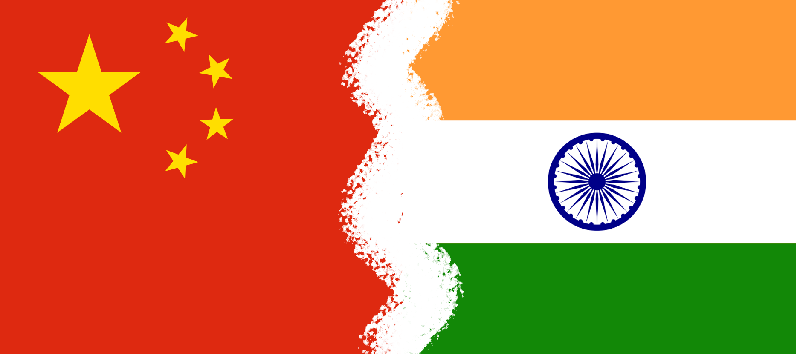India and China have been engaged in a border stand-off in the Himalayas for the past seven months. Chinese territorial claims along the Line of Actual Control (LAC) have resulted in Beijing unanimously altering the loosely demarcated border.
In between, there were reports of possible Chinese intrusions into Nepal and Bhutan as well, while these countries have denied such claims. Recently, a Chinese journalist tweeted that China has constructed a village within 2 km inside the Bhutanese territory near the Doklam Plateau.
With the setting up of a village along the Torsa River, China has once again “brushed aside neighbors’ claims of sovereignty to cement its position in territorial disputes by unilaterally changing the facts on the ground,” Steven Lee Myers wrote in The New York Times.
Following this exclusive around #Doklam, here's an expanded area visual that covers not #China's encroachment into #Bhutan but also allows a greater understanding of how the sector has been reinforced over time to ensure the PLA's ability in maintaining its "territorial claims" https://t.co/9VSb0T1BrT pic.twitter.com/z8Glw5Cfes
— d-atis☠️ (@detresfa_) November 22, 2020
Like India, Bhutan also has a border dispute with China. Tenzin Lamsang, a Bhutanese journalist, while denying the encroachment reports, said, “Bhutan and China recognize the 269 sq km in West and 495 sq km in North-Central Bhutan as disputed and so while there are maximalist claim lines from both sides there is no mutually accepted international border there yet.”
Thread
Have seen and read reports of the Chinese allegedly building a village 2 km inside Bhutan in Doklam area.
However, as per reliable sources in Bhutan there is no ‘Chinese village’ constructed inside Bhutan.
— Tenzing Lamsang (@TenzingLamsang) November 20, 2020
In July, Bhutan had got the first shocker when China laid claim to a wildlife sanctuary in the east of the country – it was a piece of land that was not considered disputed until then.
Myers wrote China has once again used the same tactics in the South China Sea where it fortified and armed shoals claimed by Vietnam and the Philippines, despite promising the United States not to do so.
Taylor Fravel, an associate professor of Political Science and Member of the Security Studies Program at the Massachusetts Institute of Technology, wrote an article, China’s Strategy in the South China Sea. “Since the mid-2000s, the pace of China’s efforts to consolidate its claims and deter others has increased through diplomatic, administrative, and military means.”
He noted that China has pursued a strategy of delaying the resolution of the dispute since the mid-1990s.
“Although China’s strategy seeks to consolidate its own claims, it threatens weaker states in the dispute and is inherently destabilizing. As a result, the delaying strategy includes efforts to prevent the escalation of tensions while nevertheless seeking to consolidate China’s claims,” Fravel wrote.

‘Incursion’ Into Nepal
In September, Indian and Nepalese media reported that China had constructed buildings in a territory owned by Nepal and denied Nepali authorities permission to visit the area between Limi and Lapcha in Nepal’s Humla district.
A building in Namkhya village was constructed 11 years ago. According to India Today, the head of the village council, Vishnu Bahadur Lama, claimed that the construction was done 2 km inside Nepal’s side and Chinese soldiers involved in the construction crossed over to China when he enquired about the buildings.
However, both Kathmandu and Beijing denied encroachment claims even as some Nepali politicians told Britain’s Daily Telegraph that China had annexed around 150 hectares of land on the Nepalese side of the border.
One must wonder why China would encroach on areas in smaller countries such as Nepal and Bhutan, which do not pose any threat to a giant like itself. But experts point out that the areas hold strategic importance to China.
Beijing often uses historical boundaries to make territorial claims, which is part of its expansionist policy. It is the same way China had laid claim to the Tibet region in the 1950s.
Disputes With India
The nearly seven-month-long stand-off between India and China is the result of an altercation between the two armies while patrolling in the eastern Ladakh region. It’s not just a small area near Pangong Tso, where 20 Indian soldiers were killed in the July skirmishes, but Beijing has claimed several areas along the LAC as part of its territory.
China also lays claim to Aksai Chin in the west of LAC and Arunachal Pradesh on the east. It had occupied Aksai Chin in 1962, the year when the two nations fought a bloody war, by claiming that it was part of the ancient and medieval Chinese empire. In the east, China has refused to recognize Arunachal Pradesh as an Indian state and identifies it as South Tibet.
While Beijing and New Delhi are discussing the prospects of disengagement, China has maintained its stance that it has not encroached upon any Indian territory.




